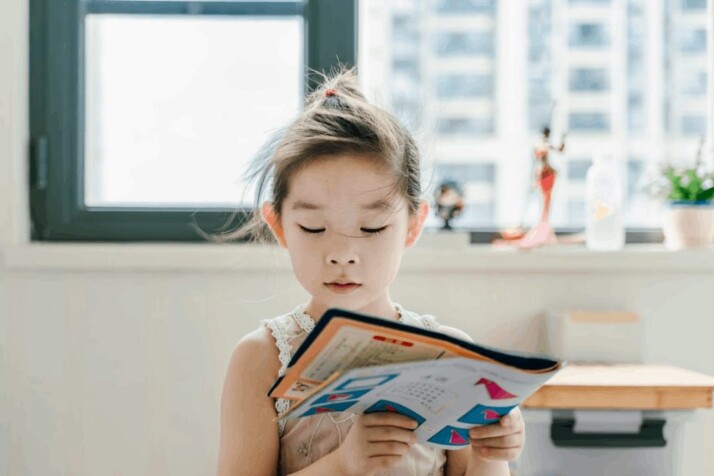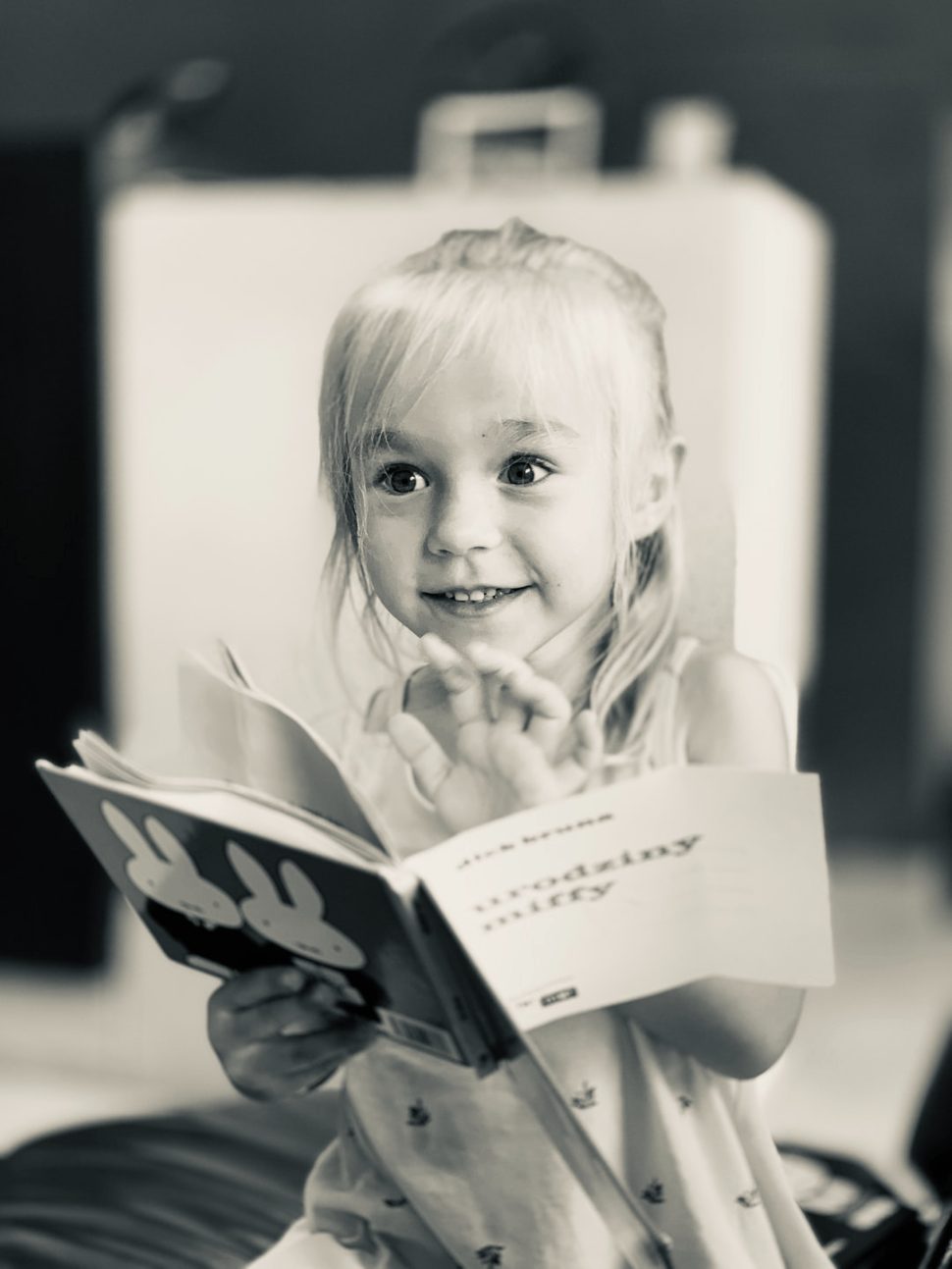Development takes place at different stages. Although teachers strive for a certain kindergarten reading level, children will not develop at the same pace.
What Is the Ideal Kindergarten Reading Level?
In kindergarten, the ideal reading level is starting at Level A and working up to Level D.
This is so they can move into reading texts at advanced levels as they continue to progress. These levels are designed to align with children’s development.
Knowing what the reading levels are, however, is not nearly enough. It’s important to discuss how much a student can read—how slowly, how fast, and how well.
Also, make sure you know how and when students are getting their reading lessons. It’s important to know how many lessons, at what time of the day, and what type of books they are getting. It can help to have a system.

Different Levels of Reading
Level A
Kindergarten reading at Level A helps children with their behavioral development towards reading. This level uses lots of sight words, rhyming words, and compound words.
Children start reading whole words and learn to read sentences with very simple vocabulary. This level uses repetition and guided instruction for learning.
Level A readers work on developing the following skills:
- Knowing the sounds of oral language
- Pronouncing words
- Finding words
- Identifying pictures
- Following a story
- Reading for information
- Using context clues and illustrations
Level A reading is essential to kindergarten. The skills that are practiced are all-inclusive. The skills learned, assist in developing and strengthening your child’s reading skills.
Level B
Level B reading is for learners who have basic reading skills. This level uses proficient vocabulary in everyday situations and includes some narratives. The grammar is simple.
But, reading comprehension and understanding of text require a dictionary and some prior knowledge of the materials.
Readers at this level have a difficult time reading long paragraphs. Concepts such as blended words are often difficult for this level because.
Level B readers should have the following skills:
- Can read short words or phrases
- Has good oral expression and oral comprehension
- Understanding of cause-and-effect relationships
- Understand definitions and simple illustrations with no need for further explanation
- Comprehends long words and sentences
- Has a basic understanding of the context
- Understand basic math formulas
- Understands basic colors and shapes
Level B reading helps children to become more confident and expand their vocabulary. It also allows them to have fun, play successfully, and engage with others.
Level C
Level C reading is the point between being a basic reader and a literary reader. The literary reader can use reading for enjoyment, to convey meaning, and to enrich their lives. But, they cannot be expected to read challenging texts.
Their reading abilities will not be as deep as they would be if they read above an educated reading level.
Level C readers develop the following skills:
- A basic understanding of reading and the English language
- Knowledge of reading strategies
- Understanding of various forms of writing (letters, numbers, and words)
- Knowledge and understanding of how the main elements of texts (sentences, paragraphs, and articles) help to communicate meaning
- Understanding how the main elements of texts (stories, plays, novels, short stories) enable the reader to enjoy and learn from a story
- Comprehend the meaning of the story
- Learn from the story
- Understanding the importance of vocabulary to read and learn.
Readers at this level are not limited by their age. If children are ready and eager to read, they should be offered reading materials that challenge them. This level helps children to understand that the world around them changes and develops and that they are not static beings.
Level D
This level of understanding focuses on the ability to think critically and make logical judgments. Students at this level are capable of solving problems. They have a solid understanding of how to work with multiple ideas to express themselves.
They have learned to read to expand their knowledge. This helps them as they progress with their reading development and comprehension.
Level D readers should possess the following skills:
- Know how to read a variety of books
- Can find specific information within the text with the use of a dictionary or thesaurus
- They have an eye for detail and can write well-developed paragraphs
- Can draw conclusions and write clear sentences that are free of spelling and grammatical errors
- Differentiate between nouns, pronouns, adverbs, adjectives and, verbs
- They can read a variety of content and summarize information within their reading
- They understand what to include and what to leave out in a sentence
Readers at this level should have advanced reading abilities. They are capable of reading and writing at a level that is advanced in the primary grades. Let’s look at why it’s so important to develop reading at this stage.

What Is the Importance of Developing Reading at This Stage?
The importance of developing reading at kindergarten level is to create a firm foundation of the language for the reader. First-grade reading tools will emerge stronger than either previous grade level thanks to these kindergarten foundation skills.
Children with these developed skills can learn how to apply their acquired vocabulary and understand the text. What happens is that they understand more text in the first grade than they did in kindergarten.
They understand different concepts in the text. These include words, parts of speech, paragraphs, sentence structure, word parts, and a lot more. Children know how to apply word parts to make new words and sentences, which is essential to reading comprehension.
So many kindergartners are not as prepared to learn reading. They have not mastered pre-reading skills such as phonemic awareness, phonics, letter identification, and letter/word pairs. This lack of development and understanding holds them back as they progress in school.
Final Words: How Do I Help My Kindergartner Improve Their Reading?
To help your kindergartner improve their reading, make sure they understand the mechanics of decoding and identifying the individual sounds of letters and words.
Read the same story to them repeatedly and break it down. This is so your kindergartner can recite the story in their head. This will help them develop confidence and understanding of what they are reading. Keep in mind, that this is an ongoing process.
It is a good idea to read to your young child often. This will help to develop their sense of independence and their love of books. It also helps to develop their reading skills!
Explore All Readability Articles
What is Reading? — Making Sense of Letters and Symbols
When studying the English language, you should familiarize yourself with its different concepts. It includes spelling, vocabulary, grammar, and reading.…
What is Readability Score? — a Quick Guide
Your text should cater to all kinds of readers. When you’re writing an article that intends to reach various individuals,…
Causes of Reading Comprehension Problems
Reading comprehension is the ability to understand and interpret written words, connecting the information in the text with previous knowledge.…
What Is ZPD Reading Level?
Everyone unique and we all have a unique understanding of the world. So what should the level of difficulty be…
The Best ELL Strategies for Reading!
Non-native English speakers can be proficient readers in their original tongue. However, those who are enrolled in an ELL (English…
These Are the Best Practices in Reading!
Best practices have been a topic of discussion in the reading education community for a long time. Among these best…
